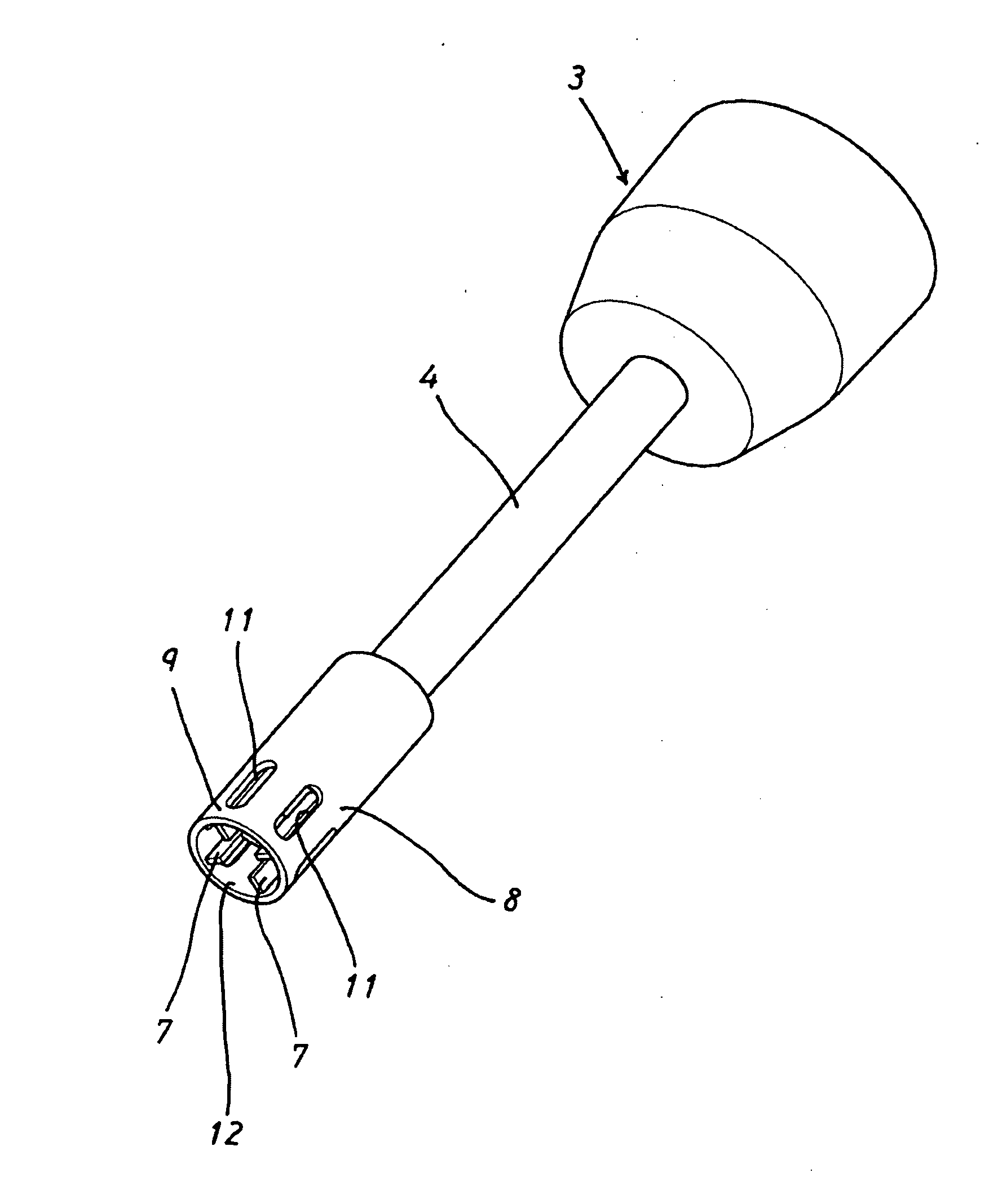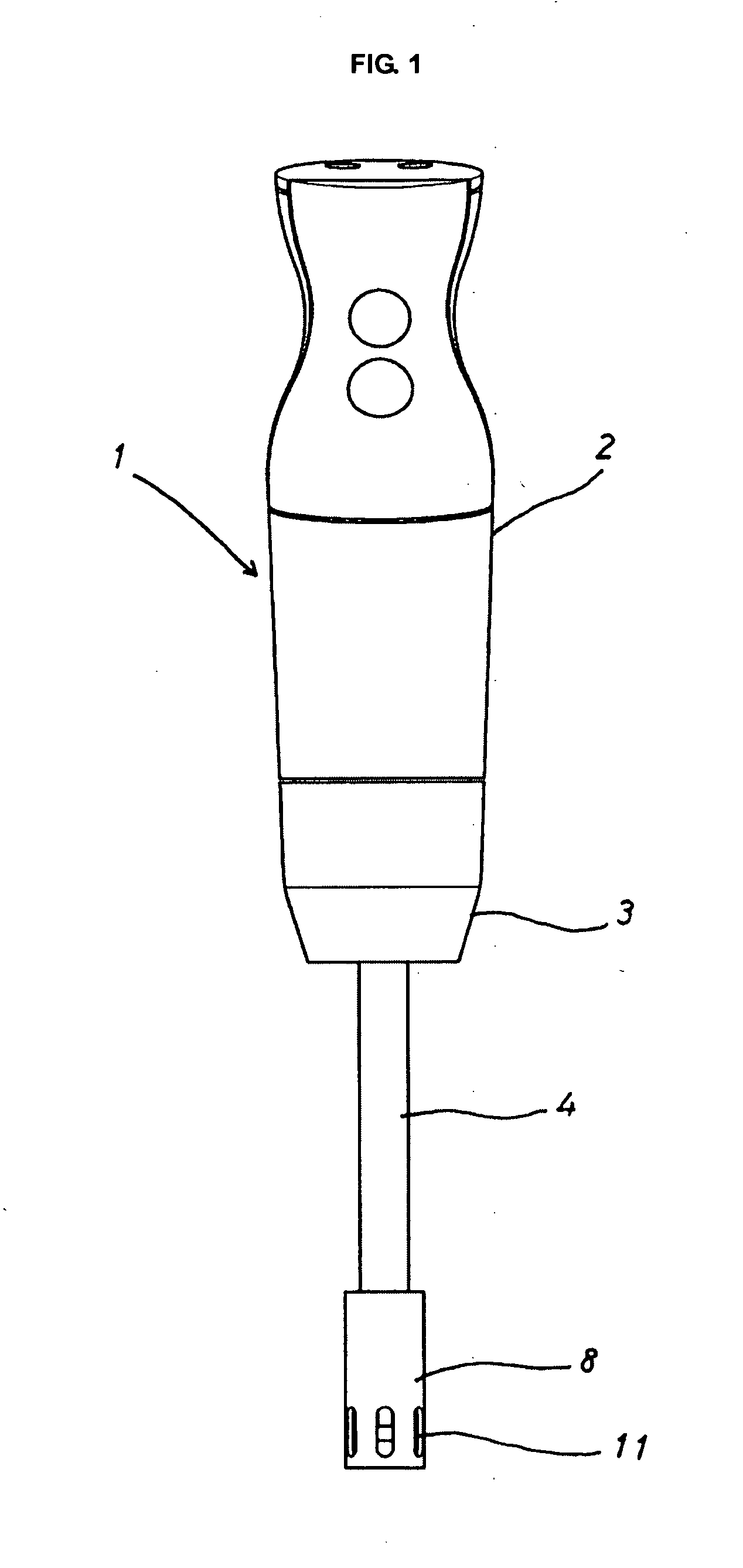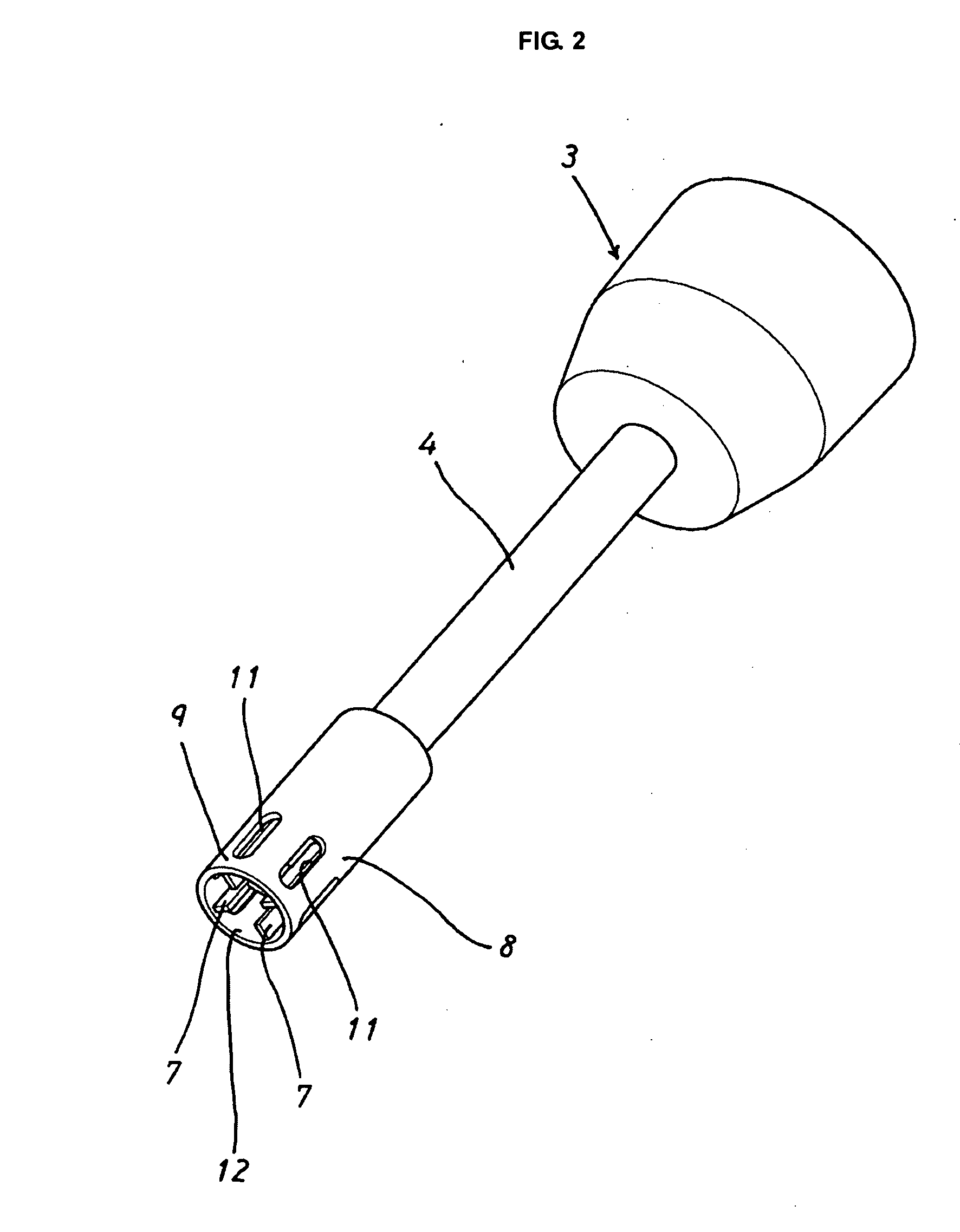Stirring tool
a technology of stirring tool and stirring blade, which is applied in the direction of rotary stirring mixer, baking plant, mixing, etc., can solve the problems of inability to fully and efficiently mix dressing, inability to properly stir ingredients, and relative long shelf life, so as to achieve the effect of increasing the quantity of ingredients circulating through the room, facilitating mixing and facilitating mixing
- Summary
- Abstract
- Description
- Claims
- Application Information
AI Technical Summary
Benefits of technology
Problems solved by technology
Method used
Image
Examples
Embodiment Construction
[0027]Next, embodiments of the present invention are described. The stirring tool 1 of one embodiment is primarily used for preparing fluid or semifluid foods such as mayonnaise and dressing.
[0028]Accordingly, the ingredients are generally likewise fluid or semifluid. The stirring tool 1 is driven by way of electric power. The stirring tool 1 comprises a main body 2 and a removable attachment 3. The attachment 3 has an external cylinder 4, and a rotating shaft 5 is inserted into the external cylinder 4. The rotating shaft 5 is coupled to a motor (not shown) which is mounted in the main body 2, and is rotated by the driving power of the motor. The motor rotates at speeds of approximately 10,000 rpm to 20,000 rpm.
[0029]As shown in FIG. 3, a blade mount 6 is fixed to the end of the rotating shaft 5, and four stirring blades 7, 7, 7, 7 are mounted on this blade mount 6. That is to say, the stirring blades 7 are mounted on the rotating shaft 5 by way of the blade mount 6. Accordingly, th...
PUM
 Login to View More
Login to View More Abstract
Description
Claims
Application Information
 Login to View More
Login to View More - R&D
- Intellectual Property
- Life Sciences
- Materials
- Tech Scout
- Unparalleled Data Quality
- Higher Quality Content
- 60% Fewer Hallucinations
Browse by: Latest US Patents, China's latest patents, Technical Efficacy Thesaurus, Application Domain, Technology Topic, Popular Technical Reports.
© 2025 PatSnap. All rights reserved.Legal|Privacy policy|Modern Slavery Act Transparency Statement|Sitemap|About US| Contact US: help@patsnap.com



